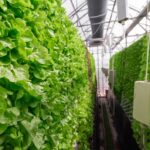Dairy farming is a critical sector in South African agriculture, providing milk for households and industries alike. For farmers, improving milk production is essential for profitability and meeting market demands. By focusing on cow health, nutrition, and farm management practices, farmers can significantly increase milk yields. Here’s a guide to help you boost milk production on your dairy farm.
1. Select High-Quality Breeds
The foundation of a productive dairy farm starts with the right breeds. Some breeds are naturally better suited for milk production.
Recommended Breeds for South Africa:
- Holstein: Known for high milk yields.
- Jersey: Produces rich, creamy milk with high butterfat content.
- Friesian: Popular for adaptability and high production rates.
2. Provide Balanced Nutrition
Proper feeding is the most critical factor in increasing milk production. Dairy cows require a diet rich in energy, protein, vitamins, and minerals.
Nutritional Tips:
- Forages: Feed high-quality silage or hay to provide fiber and energy.
- Concentrates: Add grains and protein-rich supplements for improved milk yields.
- Minerals: Provide mineral licks containing calcium, phosphorus, and magnesium.
- Water: Ensure cows have constant access to clean water; a cow needs about 3 liters of water per liter of milk produced.
3. Maintain Proper Housing
Comfortable and clean housing contributes to the health and productivity of your cows.
Housing Recommendations:
- Ventilation: Provide good airflow to prevent heat stress.
- Space: Avoid overcrowding to reduce stress and competition for resources.
- Cleanliness: Regularly clean stalls and bedding to prevent infections like mastitis.
4. Manage Cow Health
Healthy cows produce more milk. Regular health monitoring and disease prevention are essential.
Health Management Practices:
- Vaccinations: Protect cows from diseases like foot-and-mouth and brucellosis.
- Deworming: Control internal and external parasites.
- Mastitis prevention: Keep udders clean and monitor for signs of infection.
- Reproductive health: Regularly check fertility to ensure cows are calving efficiently, as lactation peaks shortly after calving.
5. Optimize Milking Practices
Efficient milking techniques can directly impact milk yield and quality.
Tips for Better Milking:
- Routine: Milk cows at the same time daily to establish a consistent schedule.
- Hygiene: Clean udders before milking to prevent contamination.
- Technology: Invest in milking machines to improve efficiency and reduce stress on cows.
- Complete milking: Ensure each cow is fully milked to prevent mastitis and encourage consistent production.
6. Reduce Stress Levels
Stress negatively affects milk production. Ensure your cows are comfortable and content.
Ways to Reduce Stress:
- Handling: Train workers to handle cows gently.
- Noise: Minimize loud sounds that may frighten animals.
- Climate control: Provide shade during hot weather and protection from cold winds.
7. Improve Reproductive Efficiency
Efficient breeding practices ensure a steady milk supply. A healthy cow should calve every 12 to 14 months.
Reproductive Management Tips:
- Artificial insemination: Use high-quality genetics for better milk-producing offspring.
- Estrus detection: Monitor cows for heat signs to improve breeding success rates.
- Proper nutrition: Ensure cows have adequate energy levels to support reproduction.
8. Regularly Monitor Milk Quality
High-quality milk fetches better prices and improves consumer trust.
Milk Quality Control Tips:
- Test milk for fat, protein, and somatic cell counts.
- Follow proper cooling and storage practices to maintain freshness.
- Implement strict hygiene standards during milking and storage.
9. Use Technology and Record Keeping
Modern technology and good record-keeping can optimize milk production and farm management.
Technological Solutions:
- Sensors: Use wearable devices to monitor cow health and activity.
- Farm software: Track feed consumption, health records, and production data.
- Automation: Invest in automated feeding and milking systems to save time and reduce labor costs.
10. Train Farm Workers
Well-trained workers are critical to the success of your dairy farm.
Training Topics:
- Proper milking techniques.
- Disease prevention and treatment.
- Safe handling and feeding practices.
Increasing milk production requires a combination of good genetics, proper nutrition, excellent health care, and efficient farm management practices. By investing in your cows’ well-being and using modern tools, South African dairy farmers can maximize yields and profitability.
Start small by implementing a few changes and gradually scale up your efforts. Healthy cows produce more milk, and more milk means a thriving dairy business.
Join 'Farmers Mag' WhatsApp Channel
Get the latest Farming news and tips delivered straight to your WhatsApp
CLICK HERE TO JOIN






